Meeting Minutes: COPE° Working group on Marine Debris and Entanglement
TUES, 9 APRIL 2024 | 11:00 AM EST
Attendees
- Wayne Macdougall, Working Group Chair
- Clayton A. Burke, Working Group Chair
- Edward Trippel
- Sebastien Blanchard
- Heather Pettis
- Alexandra Friedman
- Richard Sears
- Sonia Smith
- Sheryl Fink
- Hannah Dawicki, COPE° Administrator
- Sophie Banas, COPE° Administrator
Discussion Summary
1) Introductions and Background Information
- Attendees introduced themselves and provided brief information about their experience and affiliations.
2) Discussion on Technology and Innovation in Fisheries
- Heather Pettis explained the role of the Ropeless Consortium in organizing annual meetings to facilitate collaboration between developers, fishers, and researchers. Heather encouraged participation in upcoming Ropeless Consortium meetings and provided details about relevant events and resources.
- Discussion revolved around emerging needs in on-demand gear development, gear marking, and communication with mobile fleets.
- Edward Trippel shared insights on recent trials and funding towards on-demand and low breaking strength gear, emphasizing the need for further assessment and implementation.
- Sonia Smith emphasized the challenges of convincing fishermen to adopt new practices, highlighting the importance of cost-effectiveness and practicality in any proposed solutions. She noted the significant waste generated by fishing gear annually and discussed ongoing efforts to recycle materials, including collaborations with various stakeholders and recyclers. Innovative concepts for further potential for recycled materials in manufacturing new fishing gear was also discussed, including successful trials with companies like Goodwood Lumber and Plex Building Systems.
- Wayne Macdougall provided insights into advances in alternative fishing gear technologies, including on-demand gear and ropeless designs. Wayne emphasized the need for robust infrastructure akin to ocean GPS systems for the successful implementation of ropeless or on-demand fishing methods. He stressed the importance of visibility and accessibility of gear placements for all stakeholders, including commercial, recreational, and government agencies.
- Concerns were raised regarding the environmental impact of plastic cable ties used in some designs and the need for proper subsea marking to prevent gear entanglement. Wayne Macdougall suggested exploring the possibility of using a combination of floating and sinking ropes to mitigate entanglement risks.
3) Exploration of Rope Types and Preferences
- Wayne Macdougall raised questions about rope preferences among fish harvesters, particularly regarding floating versus sinking ropes.
- Sonia Smith suggested gathering feedback directly from fish harvesters to understand their preferences based on regional factors such as water conditions and bottom types.
- Richard Sears highlighted the cost factor associated with rope types, with polypropylene being preferred for its affordability.
4) Consideration of Weak Gear Implementation and Impact Assessment
- Edward Trippel expressed interest in assessing the impact of weak gear implementation in approved fisheries, particularly in identifying potential gear loss.
- Heather Pettis suggested consulting with experts at the Northeast Fisheries Science Center for insights and data collection on gear trials and preferences.
5) Impact of Fishing Gear on Marine Life
- Richard Sears shared insights into the historical impact of fishing gear on marine life, particularly mentioning instances of entanglement of humpback whales in fishing gear, including cod fishing gear with multiple fathoms of rope. Wayne Macdougall acknowledged the need to reduce rope presence in the water, especially with the current dependence on weak link inserts and ropeless technology.
- Richard Sears expressed urgency in addressing the issue of fishing gear entanglement, particularly in light of the endangered status of right whales. The discussion concluded with a shared commitment to finding practical and sustainable solutions to minimize the impact of fishing gear on marine life.
- The group engaged in a discussion about changes in fish migration patterns and the impact of climate change on marine biodiversity. They also exchanged information on ongoing initiatives and research projects related to sustainable fishing practices.
6) Regulations
- Edward highlighted the importance of including representatives from fisheries management in the group to ensure alignment with regulations and practicality in discussions.
- Sonia elaborated on the existing rules and regulations surrounding fishing practices and the need for understanding them to facilitate productive conversations. She mentioned major rope suppliers located in different countries.
7) Next Steps and Action Items
- Sonia Smith offered to gather feedback from fish harvesters and maritime fishing associations regarding rope preferences and weak gear implementation.
- Reach out to experts at the Northeast Fisheries Science Center for further information on gear trials.
- Review Ropeless Consortium’s reports and other resources regarding alternative fishing gear technologies.
- Continued collaboration with fishermen, researchers, and recyclers.
- Exploration of funding opportunities for recycling initiatives.
- Wayne to explore potential collaborations with other groups working on fishing gear alternatives.

